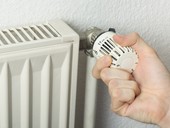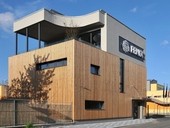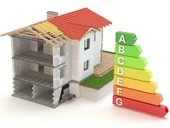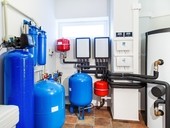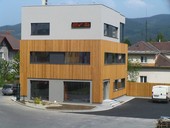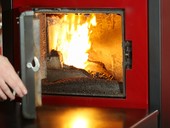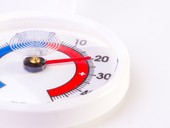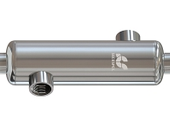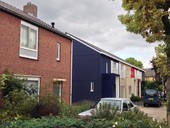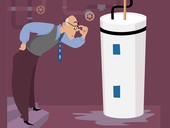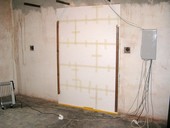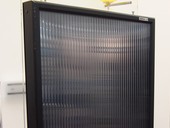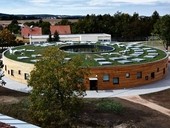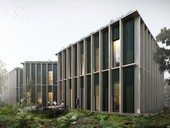The paper introduces the changes in the Public Health Protection Act and the amendment to the Government Regulation on Protection of Health from the adverse Effects of Noise and Vibration related to the stationary sources of noise. It also describes the way of measurement and assessment of noise in the communal environment.
Archiv článků od 25.6.2018 do 24.10.2018
The article contains a summary of energy consumption, a comparison with the calculation assumptions in a particular administrative building. The object is designed with minimal energy consumption and the goal is to achieve the highest degree of energy independence using photovoltaics and battery storage. The actual course of measured energy consumption, the overall assessment for the past period, the monthly summaries for the building as a whole and the individual sub-measured energy consumption are given. The aim is to bring the issue to the professional public and to indicate the path to the solution.
The notion of a nearly zero building, usually NZEB or nZEB, is no longer a novelty. This energy standard was introduced in 2016 and is gradually expanding into family houses. There are legislation, standards, but little has been gained. That's why the authors analyzed 130 already existing family houses with different heat sources. The result is an assessment of the influence of different heat sources on the energy intensity of homes and therefore an orientation aid for decision-makers of future builders.
By replacing the non-condensing gas boiler with condensing is connected with the necessity to solve the condensate drain from the boiler into the sewer. For boilers, especially in households, it may be as simple as introducing condensate into the flushing cistern of the WC. The article discusses operational and hygienic contexts. The conclusion is that without the additional installation of a special fitting – the pipe separator into the drinking water supply to the cistern, it is a solution that is inconsistent with current regulations and cannot be recommended.
The aim of the paper is to highlight the most common mistakes in sizing of domestic hot water (hereinafter only DHW) storage tanks and heat sources for DHW preparation. The article describes two basic ways of designing: Method using heat supply and demand curves of the DHW preparation system and Method of priority DHW preparation. Sizing of the DHW storage tank should primarily correspond to the used heat source and expected hot water consumption profile. When using the heat supply and demand curve method, the designer places the greatest importance on the minimum size of the DHW storage tank (i.e. the shape of the supply curve), regardless of the potential changes in the DHW consumption profile (i.e. the demand curve). When using the so-called priority DHW preparation, the basic precondition is often neglected that the required heat output of a common heat source must comply not only with the DHW preparation system but also with other connected heat consumption points.
The issue of determining the real operational efficiency of hot-water boilers for solid fuels is increasingly being discussed. Thanks to the constantly increasing energy costs, greater emphasis is placed on the precise quantification of the economy of the operation of heat sources in project documentation and various operational analyzes. For hot water boilers, it is also becoming increasingly clear that for such studies the efficiency declared by manufacturers in the accompanying technical documentation can not be taken into account as this may often differ significantly from real seasonal energy efficiency. Particularly in times of less demand for the amount of heat produced, where there is often cyclic (intermittent) source operation, its actual efficiency may differ from that declared. In this paper I will introduce the operation of a small pellet boiler as an example.
Heat balance within any zone is the basic principle for modelling and simulation of indoor temperature. State space model offers whole mathematical details about the dynamic process, because it clarifies state variables, input signals and output signals. By determining all these parameters, Simulation becomes applicable using some software, where validation process can be carried out.
Matlab/Simulink offers effective tools to deal with state space model, and convert to other models, such as transfer function model. There are some advanced tools in Matlab to analyse the system, and specify its responses to different types of input signals.
In this paper, temperature inside a residential zone has been modelled using state space model, whereas, indoor temperature and layers temperatures are the state variables. Then, state space model has been converted to transfer function model using control toolbox in Matlab. The system then has been analysed using ltiview tool. By this tool, the basic characteristics of its responses can be determined. After that, a programmed algorithm has been proposed to design a proportional controller depending on transfer functions obtained from state space model. Finally, Simulation has been carried out using Simulink to validate the results.
The paper presents the basics of heat exchanger design in systems with low temperature heat sources. Above all, it is the basic physical properties of the various heat exchanger constructions that make up their choice. The effect of the properties of various low-fat heat-transfer liquids on the efficiency of heat transfer by the exchanger is also included.
The paper describes actual trends in serial deep energy retrofitting of buildings in the Netherlands. A set of photographs presents several Dutch pilot projects of energy retrofitting of post-war family houses in Heerlen, Melick and Soersterberg to net zero energy level and of one multifamily residential building in Arnhem to nearly zero energy level. The retrofitting projects were made utilizing prefabricated thermal insulation wall modules with timber structural system (that included new windows) and prefabricated roof panels. All presented projects also featured replacement of energy sources and in case of the family houses also installations of photovoltaic systems replacing roof tiles.
An important mission of memory institutions is to ensure adequate care of cultural heritage objects during their long-term storage. However, many of these institutions are located in historical buildings, where it is not easy to maintain proper indoor environment and required microclimate conditions, given especially by relative humidity and temperature. The paper presents results of experiment of heating by the “Conservation Heating” method for two selected rooms of the Kunštát Lower Castle. The experiment has been continuously running in the building from middle of the year 2013 until May 2017. Presented case study was made in the year 2015 and it is targeting the year 2014. Experimental measurement was supplemented by numerical simulations, in order to evaluate efficiency of the above-mentioned heating method in more extreme outdoor climatic conditions and thus predicted electricity consumption. It is not known that this system would be previously tested in the Czech Republic.
Energy consumption in residential buildings depends on the quality of building stock. Besides external conditions, there are two basic factors influencing future energy consumption – the technical requirements for new-built buildings and the refurbishment rate of the existing building stock. The paper presents an approach which integrates both strategies into one dynamic model. The main outputs are the amount of refurbished buildings and the energy consumption in the whole building stock. The model allows to estimate these results according to the quality of new-built buildings and at the same time it is possible to set up a strategy for the second option reducing the energy demand of buildings, i.e. the refurbishment of existing building stock. In the case of refurbishment, the key parameters for the decision about implementation of proposed improvements in buildings are usually the energy prices and the level of subsidy. Decrease in energy prices will change the financial profit from a project and it will consequently influence the owner decision about the refurbishment of a building. The model is based on system dynamics. It allows for a large scope of boundary conditions to be simulated. A sensitivity analysis has been performed on the input parameters having major influence on the owners’ decision about refurbishment of the existing building stock.
Solar air collectors can provide partial coverage of the heat demand for building heating. On the energy model of a family house, an annual heat supply for heating for different uses of air collector systems was examined. The analysis shows that, as opposed to the use of a ventilating unit with recuperation, the air solar collectors do not provide savings due to low solar gains and short operating hours in the winter. The combination of the air collectors with the regenerative unit does not bring a significant decrease in the energy requirement compared with the regenerative unit itself, as the combined efficiency of both devices is reduced.
The actual performance of the radiator and the dynamics of its change affect the price of heating systems and their energy intensity. The article describes experimental performance verification in various types of wiring and also dynamics of performance change. The results are also commented on with regard to the one-pipe heating option.
The contribution summarizes findings regarding implementation of predictive control algorithms of a hybrid GEOTABS system with time variable price of electric power. The real case study demonstrates that the direct control of the heat pump output according to the dynamic price can bring financial savings. However, for the full utilization of the potential, it is necessary to ensure sufficient accumulation for all types of energy consumption – the TABS system has high storage ability from its nature, yet there arises a problem with accumulation for HVAC and DHW systems.
It is expected that the new administrative centre of Lesy České republiky would be an exemplary demonstration of the use of wood, which will be used in the form of the building material or in which the importance of wood will be emphasized in another appropriate way. The paper is focused on a proposal that won the international architectural competition in 2016.
The basic criterion for each investment is economic efficiency. This has been simplified in heating by more or less energy consumption. This principle cannot be applied if the energy take-off price consists of several components, some of which are fixed or graduated in jumps, and others depend on the amount of energy taken. Under such circumstances, it is not right to design a technical solution solely on the basis of its lowest purchase price, but optimization steps are required. In the article, the author shows how very different the heat price can be for one and the same object in a different pricing structure. At the same time, it shows that choosing the most appropriate price structure is not a simple task that can only be done by an economist. The detailed knowledge of the heating system and its operating parameters and possibilities must also be included in the solution.
zpět na aktuální články
